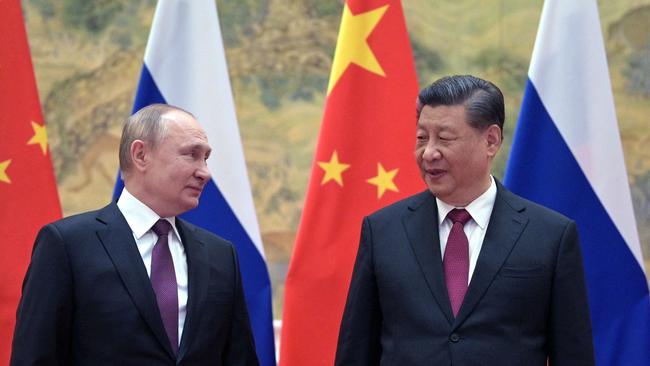Behind the gas battle between Russia, Ukraine, China and Australia: Robert Gottliebsen


The Ukraine war is like many conflicts over the last 100 years – control over oil and gas is vital in the motivation of the parties.
And, as you will see below, gas was an important part of the negotiations at the Beijing Winter Olympics between China’s Xi Jinping and Russia’s Vladimir Putin. They were an essential precursor to the Russian invasion of Ukraine. These negotiations could have a significant bearing on Australia in coming months.
Ukraine has two major undeveloped shale gas deposits containing a total of 1.2 trillion cubic metres of gas which had the potential to see the beleaguered country not only supplying its own gas but exporting to Europe in competition with Russia.
The first of the deposits was around the Donetsk region not far from now destroyed port city of Mariupol and Crimea where there was considerable conflict between Russia and Ukraine after Russia annexed Crimea in 2014.
Prior to the conflict, Shell had agreed on a massive development of the Donetsk field in a production sharing agreement with the Ukrainian government. But as the conflict intensified Shell pulled out in 2015
The second deposit is in a region in the west of Ukraine near the town of Lviv which is a currently a staging post for refugees moving to Poland and other European countries.
Separately, to Shell, the US oil giant Chevron agreed to a second massive Ukraine development but pulled out in 2014, again after the conflicts flared. A side benefit to Russia from the Crimean acquisition was preventing Ukraine from competing with Russia to supply Europe with gas.
In some of the current peace settlement proposals being canvassed, the Donetsk region and it‘s massive gas, would come under Russian control.
But Ukraine would retain control of the smaller deposit in the Lviv region. If there is a settlement this gas deposit will be important in Ukraine’s recovery.
Thanks to a remarkable weekend report in the South China Morning Post we now know a lot more about what happened at the Winter Olympics, just before Vladimir Putin invaded Ukraine.
Putin in negotiations with Xi, secured a series of oil and gas deals worth an estimated $US117bn ($A155.73bn) to Russia.
The most significant one was for Russian gas exporter Gazprom to supply China via a new pipeline from the Far Eastern island of Sakhalin to China’s northeastern Heilongjiang province.
When the line is in operation by 2026, Russia’s annual supply of pipeline natural gas to China will rise to 48 bcm (billion cubic metres), around three times the 2021 figure.
Additionally, Gazprom is making preparations for a major pipeline through Mongolia.
Russia exported 16.5 billion cubic metres (bcm) of gas to China in 2021 via pipelines and in the form of liquefied natural gas. The above deals will lift supply above 100bcm but that’s far short of the 170 bcm of natural gas currently being supplied by Russia to the European markets each year.
And Russia currently receives much lower prices by selling gas to China. While increased China purchases of Russian natural gas will not make up for the loss of the European market there appears to be a major side benefit.
Tatiana Mitrova, research fellow at the Centre on Global Energy Policy, Columbia University, told the South China Morning Post that the real importance to Moscow of the gas sales to China will be Xi’s willingness to provide products in exchange for gas.
“You remember this ‘oil for products’ program in Iran? It’s rather moving in this direction, not about trading, but just about providing the inflow of the most necessary goods and products.”
President Biden is taking an increasingly tough stance against Russia and if China breaks sanctions on an extensive basis there will be pressure on Australia to follow the US in curbing trade with China. Almost certainly iron ore will be the subject of controversy and Australia might export some of China’s gas to Europe. It could be a major issue for the next government.
Footnote: Over the weekend I received a note from Canada’s Teck Resources that their total GHG emissions in 2019 (Scope 1, 2, 3) were approximately one-fifth that of BHP and one-sixth that of Rio Tinto. You will remember that on March 24 under the heading ‘Former BHP executive Alberto Calderon issues stark warning to mining industry, Australia, I quoted Calderon as showing Teck’s total emissions were greater than BHP and Rio. Following the Teck statement Calderon commissioned a detailed check of all the emission calculations that had been provided by a third party. All were found to be correct except Teck. Calderon asked me to correct the Teck statement and confirm the Teck figures.






